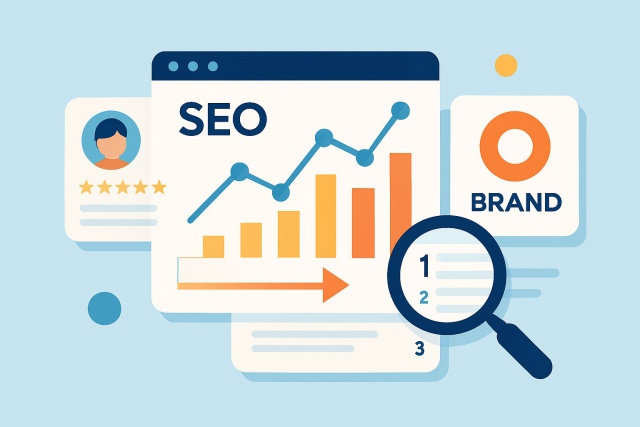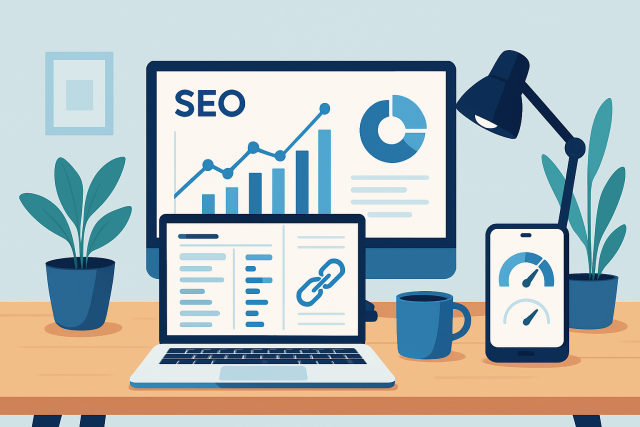
Best Books on SEO for Marketing Professionals
Explore the best books on SEO that equip marketing professionals with practical insights and strateg...

Enterprise SaaS SEO is all about fine-tuning software-as-a-service platforms tailored for big organizations. Given that enterprise sales tend to be complex and often weave through numerous layers, SEO becomes a key tool to drive quality traffic that shows real intent and lays the groundwork for long-term relationships. This comprehensive guide walks you through everything from the must-know basics to advanced tactics geared specifically toward enterprise SaaS.
Enterprise SaaS platforms cater to complex large-scale businesses that demand robust and scalable solutions they can rely on.
Aligning SEO KPIs with the bigger picture of enterprise growth goals is absolutely vital. Keeping an eye on metrics like marketing qualified leads (MQLs) and sales qualified leads (SQLs) ensures that SEO efforts truly punch above their weight. It also drives real impact on revenue and market presence.
Zero in on KPIs that genuinely tie back to your business goals, like lead quality and just how much your pipeline gains from them.
Team up closely with sales and marketing squads to ensure your SEO tactics fit perfectly with each stage of the funnel—no one-size-fits-all here.
Lean on past data and industry norms to set targets that are ambitious yet totally within reach.
Keep a steady watch on ROI by tracking exactly how organic traffic trickles down to boost your revenue—because numbers don’t lie.
Make it a habit to regularly revisit and fine-tune your goals, so you’re always nimble enough to dance with shifting market trends and fresh campaign insights.
Keyword research for enterprise SaaS usually requires a well-thought-out strategy that puts user intent front and center. It takes a hard look at the competitive landscape and thoughtfully maps keywords to various buyer stages.
On-page optimization for enterprise SaaS sites usually boils down to fine-tuning metadata and weaving in structured schema. It also includes sorting out URL hierarchies like a well-organized closet, crafting detailed content, and boosting internal links.
| Element | Best Practice Description | Common Mistakes | Impact |
|---|---|---|---|
| Title Tags | Use your primary keywords wisely and keep them snug between 50 and 60 characters for that sweet spot in display | Overstuffing keywords like it’s a Thanksgiving turkey or leaving them out completely | Results in better click-through rates and makes your content more relevant at a glance |
| Meta Descriptions | Craft clear, punchy summaries with compelling calls to action, all wrapped up nicely under 160 characters | Repeating the same descriptions or being vague enough to put readers to sleep | Gives your CTR a nice boost and keeps users engaged longer |
| Schema Markup | Apply SaaS-specific schemas thoughtfully to your products, reviews, and FAQs to stand out in search results | Forgetting to add schema or getting it wrong, which is like missing the mark on a dart | Boosts your chances of rich snippets and snazzy SERP features |
| URL Structure | Build clean, keyword-rich URLs that mirror your site’s structure without getting tangled up | Relying on messy dynamic parameters or creating URLs that look like a spaghetti bowl | Makes life easier for both crawlers and humans navigating your site |
| Internal Linking | Link related pages to share authority neatly and help visitors find their way around | Having broken links or going overboard with too many links | Leads to deeper crawling and keeps visitors hanging around longer |
| Content Depth | Develop rich, detailed content that truly speaks to the needs of savvy enterprise buyers | Publishing thin content that leaves readers wanting more | Strengthens your topical authority and gives your rankings a nice little lift |
An effective content strategy for enterprise SaaS SEO doesn’t just play at the edges—it tackles challenges head-on at every stage of the funnel. It leans on a well-rounded mix of formats, from pillar pages and detailed technical documentation to case studies that really highlight ROI.
It’s like knowing your customer’s playlist before the party even starts.
Toss out blog posts and videos to spark awareness. Roll out webinars and whitepapers when they’re chewing it over. Seal the deal with case studies and demos during decision time.
Seamlessly weave targeted SEO keywords into your content so it boosts your visibility without making readers want to run for the hills.
Keep things fresh and lively by regularly updating your content. Don’t be shy about repackaging your star performers into new formats. It’s a clever way to catch more eyeballs.
Think of it as fine-tuning your strategy based on what’s really working.
Creating content hubs centered around key enterprise SaaS topics really helps to centralize authority, making it a breeze for search engines to understand how all the related content connects.
Enterprise SaaS platforms have to juggle working within crawl budget limits while boosting site speed and ensuring they work well on mobile devices. They need to monitor indexation and use structured data smartly. They must tackle duplicate content with canonical tags and handle tricky JavaScript-heavy frameworks gracefully.

Visual representation of key technical SEO elements optimized for enterprise SaaS platforms.
Building authoritative backlinks is vital for boosting domain authority and climbing the search rankings in the enterprise SaaS world. The most effective backlink strategies involve teaming up with industry analysts, writing guest articles that resonate, forging strategic partnerships and tapping into public relations to widen your reach and build credibility.
Measuring SEO success in complex enterprise settings usually calls for a wide range of metrics and well-integrated reporting systems. Keeping a close eye on the quality of organic traffic and how lead generation is pulling its weight helps teams make smart, data-driven decisions. They also monitor the technical health of the site and where it stands against competitors.
Build customized SEO dashboards that draw data from Google Analytics, Search Console and reliable third-party tools like Moz Pro to give you the full picture without guesswork.
Don’t stop at just traffic numbers. Dive into user behavior and engagement metrics to truly understand the quality of those organic visits.
Keep tabs on the leads your SEO efforts bring in and track their journey through the sales funnel because numbers mean little without context.
Stay vigilant on technical SEO health by running regular site audits to catch any issues before they snowball.
Take a hard look at conversion rates from organic channels to truly understand your ROI. It’s the money talk you don’t want to skip.
Benchmark your performance against key competitors to uncover hidden opportunities and avoid lurking risks.
Enterprise SaaS SEO tends to come with its fair share of headaches, like those long sales cycles that seem to stretch forever before you actually see any results. Then there are the intricate approval processes, where multiple stakeholders have their say and content creation can feel like it’s moving at a snail’s pace. On top of that, getting various teams to sing from the same hymn sheet can really put the brakes on progress.
"Tackling enterprise SEO challenges often boils down to tight-knit teamwork between sales, product, and marketing squads. Getting everyone on the same page is key to keeping the wheels turning smoothly, especially when the complexity starts to pile up. Trust me, a well-oiled process can make all the difference." – Jennifer Lee, SEO Strategist
Building a SEO workflow that you can reliably repeat and scale is absolutely important for long-term success in enterprise SaaS. It’s about more than just ticking boxes—you need to dig into your current content with a fine-tooth comb, balancing technical tweaks and content upgrades. Keeping a strategic content calendar handy helps you stay on track without feeling overwhelmed. Tools like Moz Pro and Mangools can take a load off by automating repetitive tasks, freeing you up to focus on the bigger picture.
Kick things off with a deep dive audit of your current SEO assets—dig into what’s working and what’s not. Also, find those pesky gaps lurking under the surface.
Zero in on SEO fixes that strike a sweet balance between quick wins you can celebrate soon and steady long-term gains that really pay off.
Set up and stick to a content calendar that’s not just a planner but a strategic sidekick. It should align perfectly with product launches and keep you in lockstep with what’s buzzing in the industry.
Lean on trusty SEO tools like Moz Pro to keep an eagle eye on keywords and perform site audits while Mangools provides insights on competitors and backlink opportunities.
Collaborate closely with your sales and product squads to nail down SEO-driven leads and gather their on-the-ground insights because their feedback often holds the key to fine-tuning your approach.
Every quarter, take a moment to step back and review performance and workflows. Don’t hesitate to tweak strategies and roles—flexibility is the name of the game.
19 articles published
With over two decades of experience navigating the intricate realms of online marketing, Bryson Gallagher is renowned for his strategic prowess and data-driven methodologies, equipping organizations with the tools to seamlessly engage global audiences.
Read Pages
Explore the best books on SEO that equip marketing professionals with practical insights and strateg...

Master SEO and reputation management to elevate your brand’s online presence. This guide offers acti...

Discover essential SEO project management tools that help organize your team, streamline workflows,...

Consistent monthly SEO tasks keep your website ahead of algorithm changes and competitors. Learn how...